Pan de San Nicolas- Filipino Heirloom Cookie
As an Amazon Associate and member of other affiliate programs, I earn from qualifying purchases.
When I need to calm down, baking heals my spirits. I baked these Pan de San Nicolas- Filipino Heirloom Cookies, from a heirloom recipe. These cookies are also known as Panecillos de Saniculas of Pampanga and date back to our grandparents’time. The slower process calmed me down and made me think of times when life was simpler, less complicated. The intricate design of the antique cookie molds drew me to images of a generation when days were less rushed, less busy. Of an era when handmade and made from scratch were the norm. When there were no technical gadgets nor social media whirling around to record or transmit anything. There was nothing instantaneous about this Pan de San Nicolas cookie. That is why the Pan de San Nicolas is a beautiful cookie. Even better, old stories say this is a cookie that heals.
There was a reason why our grandmothers created recipes like this generations ago in the Philippines. This type of cookie was meant to show what was important in life. The effort and the love that went into the making of this recipe, the hand carving of these molds, they were all meant to illustrate what mattered most.
This cookie recipe spoke for itself. It had a few ingredients. It was uncomplicated, nondescript. I mixed it by hand. I shaped the dough with my nimble fingers. I patted it all down on the wooden block of a cookie mold.
The results were an amazingly pretty cookie, that looked like it was hand embroidered. The flavors were exquisite. There was sweetness from the coconut cream, but it was not overbearing. There was a buttery aroma, but it was understated. There was a quiet, breathtaking beauty in the cookie as I held it in the palm of my hand. It had taken a while to mold and bake, so it was taking me a while to eat it right away. I had to sit still and appreciate every vine, every curve, every little detail on its picture perfect prettiness.
“Where did you get these?” my sons exclaimed in admiration. They inspected the hand carved intricate cookie molds of heirloom origin, made of mahogany. Curious, the boys bombarded me with questions. I was glad my boys, now all grown could appreciate the beauty of this heirloom wooden cookie mold, which was solid, thick and heavy.
Pan de San Nicolas originated from St. Nicolas, one of the most beloved saints of Pampanga, the culinary capital of the Philippines. This was the province near the town where I grew up. Old folklore stories tell us these Pan de San Nicolas were baked carefully, stored in large jars, and when illness struck were fed to the ailing person, with an accompanying prayer.
Atching Lillian (“atching” means older sister, a term used to show respect) described there were different shaped wooden cookie molds and she could tell by the shape of each which family in Pampanga they originated from. The longer, oval shaped cookie molds belonged to the Lansangan family, who dabbled in music – which explained the harp shaped molds. The leaf shaped molds belonged to the Hizon families, who were vast landowners.
And the circular round molds were to the Bustos and Madrid families, from another part of the province. No matter what interesting origins each varying shaped wooden cookie mold had, there was one single heirloom recipe.
Atching Lillian gladly shared the recipe with me and patiently showed me how to make it, by rolling the dough right before my eyes, amidst the heirloom and antique kitchen artifacts that surrounded us. I was in kitchen heaven.
Back here in my suburban Jersey kitchen, I thought the best time to do these Pan de San Nicolas was during the holidays. I knew my sons, who grew up in America, would be fascinated with this wooden piece of art I brought back with me. And I knew they’d love the delicate, buttery flavors of these shortbread-like cookies.
If you ever get hold of these same antique-like cookie molds, and try your hand at this recipe be patient. Trust me, each time you bake, it gets better and you’ll find it easier after the last time. My first attempts were clumsy and I had to redo the cookies over again.
While rolling the dough and patting it firmly on the antique cookie molds, I felt like a woman from my grandmother’s time. So this is what it was like to bake cookies during yesteryear, I thought to myself. I found that I had to grease the wooden molds well, after each time I used it. I also discovered that freezing the dough, and using it extremely cold, helped make the cookie more malleable, easier to handle.
Once the Pan de San Nicolas cookies came out of the oven, I felt connected to generations of bakers before me because I did what grandmas before me did long ago. I baked what was part of a heritage. I took a bite, savored every crumb, enjoyed the flavors – a mix of butter, coconut cream, with a firm texture similar to shortbread and sipped my warm cup of tea. The sweet, light aroma invited me to reach for one more. It was indulgent, but it felt alright.
Nothing else made Christmas this rich with meaning than this lovely heirloom cookie – the Filipino Pan de San Nicolas. And the most thrilling part? I can now bake it in my own kitchen here in the States. All of it was well worth it!
*Update: Google Philippines featured on 8/7/17 this recipe blog post of my Pan de San Nicolas as part of its 365-day digital campaign about all things Filipino.
Pan de San Nicolas - Filipino Heirloom Cookie
Equipment
- Heirloom wooden cookie molds
- Springerle cookie molds
Ingredients
- 1 1/2 cups rice flour
- 1/2 cup cornstarch
- 2 cups cake flour
- 1 Tablespoon baking powder
- 1/2 teaspoon salt
- 1 cup + 2 Tablespoons granulated sugar
- 6 whole eggyolks
- 1/2 cup coconut milk
- 1/2 cup unsalted butter or margarine softened at room temperature
- 1 teaspoon fresh lemon zest
- 1/2 cup vegetable oil
Instructions
- Combine all the ingredients in a bowl : cornstarch, baking powder, salt, sugar, egg yolks, coconut milk, softened butter, lemon zest and oil. Blend well with a wooden spoon. Slowly add the cake flour and the rice flour, knead it into the mixture till it resembles a thick dough and has a smooth surface. Mixing by hand should take about 10 minutes till it is smooth and all ingredients are incorporated.
- Place the dough into an airtight container and freezer for 2 to 4 hours or overnight.
- When ready to bake, take the dough out of the freezer and thaw on the counter for 8 to 10 minutes. Keep the dough very cold so it is easy to roll out and handle on the heirloom cookie molds.
- Grease with baking spray or shortening the surface of the San Nicolas mold which has the design. Make sure to grease the inner crevices and corners so that the dough can be removed easily after shaping.
- Place a chunk of the dough, about 4 tablespoons over the San Nicolas mold, on the hand carved portion. Flatten with your hand to spread it around evenly. Place a piece of parchment or wax paper over the dough, which is over the wooden mold. Using a rolling pin, roll and flatten the dough so it gets embedded in the design.
- Place a round or oval cookie cutter over the San Nicolas mold, to cut the dough to the appropriate shape needed. Trim the edges of the cookie if needed, whether round or oval. Quickly transfer the molded dough onto a baking sheet that has parchment paper or a silicone baking sheet.
- Bake Pan de San Nicolas at a preheated oven of 325 F degrees for 10 to 12 minutes or till top is brown.
- When done, cool the cookies on a cookie rack. They will be crisp on the outside, but will have a slightly soft shortbread texture inside. It will take at least 30- 40 minutes for the cookies to cool on the rack. When Pan de San Nicolas cookies are cooled, wrap in white cellophane wrappers to show off the intricate designs. Store in an airtight glass or plastic jar.
- RECIPE NOTES : The original recipe of Mrs. Borromeo called for 2 cups of arrow root flour (in the Philippines, it is 'uraru'). But it was not easy for me to obtain here in the USA, so I substituted Mochiko rice flour and regular cornstarch, and the recipe worked out well. If you find arrow root flour, use 2 cups in place of the rice flour and regular cornstarch.
- * COOKIE MOLDS SUBSTITUTE : If you can't fly out to Asia and the Philippines right away to buy some antique cookie molds, try using springerle cookie molds which can be purchased online.
- Hello, Friends! All the images and content on this blog are COPYRIGHT PROTECTED and owned by my media company Besa-Quirino LLC. This means BY LAW you are NOT allowed to copy, scrape, lift, frame, plagiarize or use my photos and recipe content I wrote, on your website,books, films or videos without my permission. If you want to republish this recipe or content on another website, video or news article, please ASK my permission, re-write it in your own words and simply link back to this blog to give proper attribution. It’s the legal thing to do. Thank you. Email me at [email protected]
Nutrition
Notes on Nutrition: The nutrition information provided in the recipe links is an estimate and will vary based on cooking methods and specific brands of ingredients used.
Copyright Notice: Hello, Friends! Please DO NOT LIFT OR PLAGIARIZE Asian in America recipes on this blog, my original recipes, stories, photos or videos. All the images and content on this blog are COPYRIGHT PROTECTED and owned by my media company Besa-Quirino LLC by Elizabeth Ann Quirino. This means BY LAW you are NOT allowed to copy, scrape, lift, frame, plagiarize or use my photos, essays, stories and recipe content on your websites, books, films, television shows, videos, without my permission. If you wish to republish this recipe or content on media outlets mentioned above, please ASK MY PERMISSION, or re-write it in your own words and link back to my blog AsianInAmericaMag.com to give proper attribution. It is the legal thing to do. Thank you. Email me at [email protected]

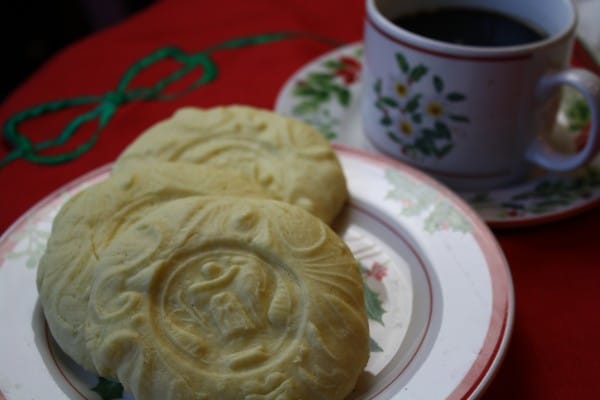
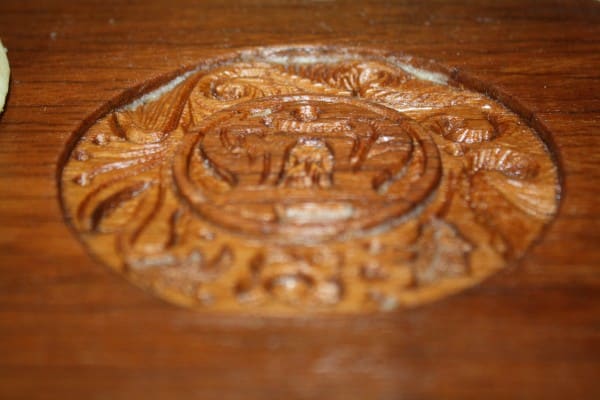
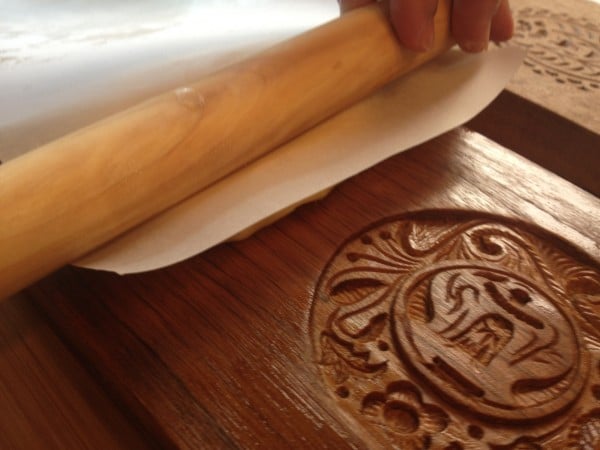
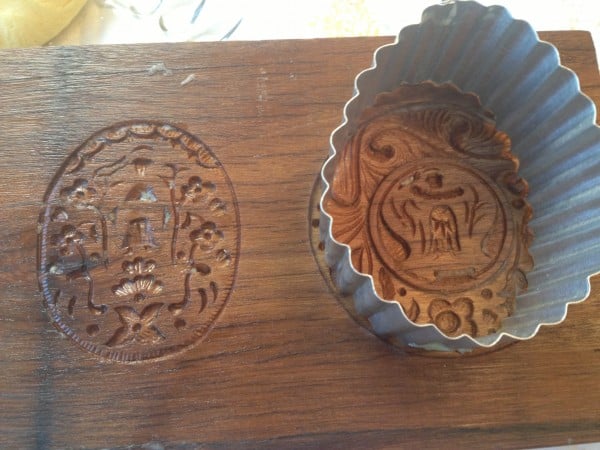

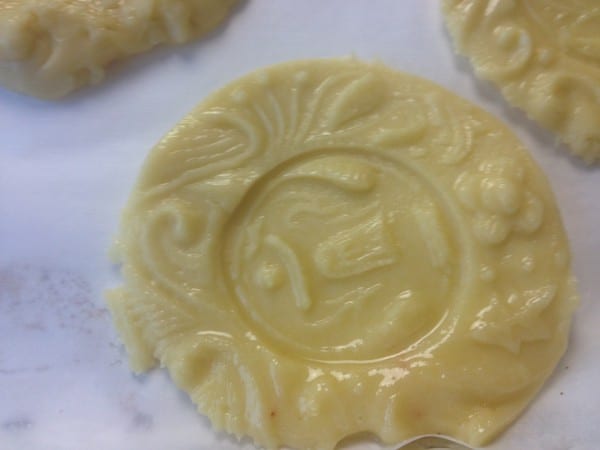
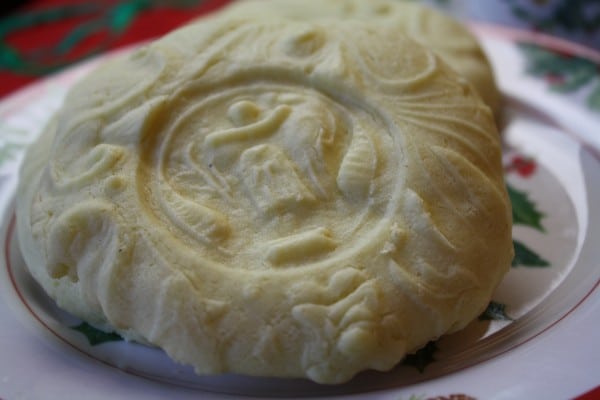
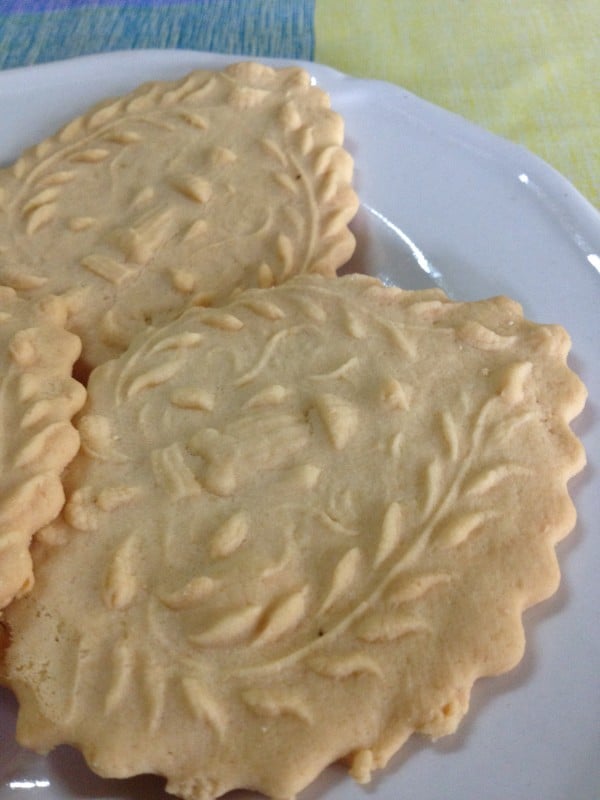
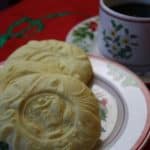
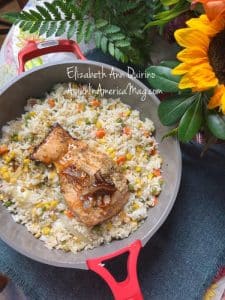
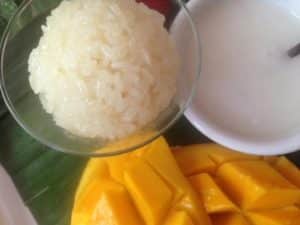
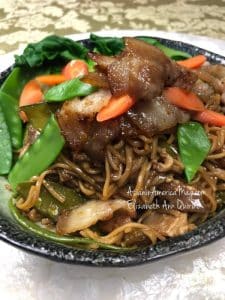
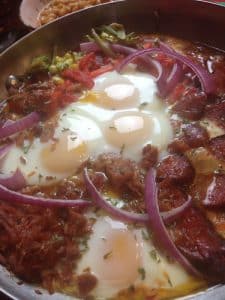
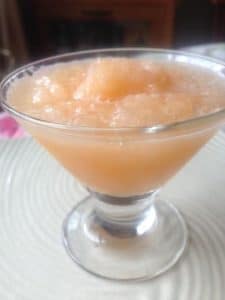
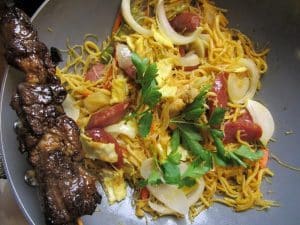
Just lovely, BA. How great to have such a rich cultural heritage that you can turn to when you need to slow down; reboot; reconnect. 🙂
Thanks, Jenni! I originally thought this Pan de San Nicolas cookie and story was apt for the holidays, but after Sandy, after Sandy Hook and all our emotions packed with so much angst, I felt the need to reboot, renew, recharge. Thanks for stopping by,my friend! Happy Holidays 🙂
Betty Ann, I share your need to slow down, to make the time to pour our hearts into the comfort of dough, and our heritage and our loved ones. These cookies are beautiful and the molds themselves are works of art! I have never had the chance to see one; thank you for teaching me something new today!
Thanks, Liren, so kind of you to say all these sweet comments. When I returned from my Philippine trip, my suitcase bulged with these heavy wooden cookie molds. I held back baking them till I had a whole day of not doing anything else. Turned out, I needed several days, which included three attempts of trial and error. In the process, I realized why the recipe was the way it was — it wasn’t tedious, it was just meant to bring out the best in you. Thanks for your love, support and friendship. Happy Holidays!
My family is from Pampanga, both my mother & father’s sides from Del Carmen, Lubao, Pampanga.
I have never heard of these cookies before.
My mom passed away on November 8 this year, so I would love to surprise my Dad with an old cookie from his hometown. Do you know if the molds are only sold in person in the Philippines? I would love to find molds for these!
What a nice way to bring my Dad an edible piece of Pampanga & comfort him as we miss Mom at Christmastime.
Hi Michelle. My sympathies on the passing of your mom. How wonderful it will be to surprise your dad. Unfortunately, I think these heirloom cookie molds can only be bought in person – the Pampanga Culinary Heritage Tours by Outereaters’ Poch Jorolan is a great trip if you ever go back home.
Now as far as baking the Pan de San Nicolas here in the States, I was thinking you could try the Madeleines cookie molds, they have the depth that this recipe needs. I’ve seen Madeleine molds in the baking aisle of department stores. But I haven’t tried it yet. I will soon for practical purposes and let you know. Thanks for stopping by. Happy Holidays!
Betty Ann, you are wise and kind. What a gift to read this post and see these images today. These cookies have healing powers for me, even through the screen far away. Thank you for gathering these sweet servings of knowledge and history and cuisine and bringing them along to people who don’t know them like me, people who love being reminded of them, and people who can carry them forward like your sons. Lovely. I look forward to making them. I have some small molds for moon cakes that I bought in Vietnam. I think they might be usable here. And I have seen cookie molds from early American baking, so you have sparked a curiosity for me now. All the best to you. oh, and San Nicolas! Is there any Christmastime connection as in Jolly Old St. Nick in the Filipino cookie, or not?
Thanks, Nancie! Your kind comments are so uplifting and heartwarming, especially today when all of us are going through such a tough time watching the news. And yes, I think your moon cake molds might just do the trick. Please go ahead and try this recipe, and let me know. If you ever get hold of arrowroot flour, give me a heads up so I can order some, too. Glad you liked the story. Just like everyone who has read this story, I’m convinced hauling the heavy wooden molds in my suitcase and paying the excess baggage fees was well worth it. And to answer your question, the Pan de San Nicolas, originated from St. Nicolas de Tolentino, said to be the patron saint of bakers. These origins can be traced back to when Spain colonized the Philippines in the 16th century. Happy Holidays!
I love how they turned out. I can see how much patience you need but after reading your instructions, it has given me some faith to try it out. Now, all I need are the cookie molds 🙂
Thanks, Adrian. So nice of you to see my patience through the photos. You should have seen the first attempts. But our grandmas must have known their cookie when they did these Pan de San Nicolas. It’s a simple recipe with few ingredients, but the process of molding and mixing brings out the best in you. Try it. Fly over to the Philippines and get a hold of some molds! Glad you came by, it’s always a pleasure to have you visit 🙂
What beautiful cookies! That is a gorgeous mold. I love the stories that go with your recipes.
Thanks, Lisa! So nice of you to come by. Glad you enjoyed the story that came with the cookie molds. Happy Holidays!
Hi, thank you so much for sharing your recipe. It’s been a while since Am surfing the Internet for this recipe, love this cookies. Can’t fly back right away to the Philippines but I have lots of relatives in the Bulacan, do they have to join the culinary heritage tour or they can just go to Mexico ,Pampanga and buy the cookie molds? Do you remember the address of Mrs. Borromeo? Thanks again and I admire your patience, hope mine will turn out okay when I try it.
Hi Rowena! Thanks for the lovely comments, it makes my day every time my readers enjoy the recipe and story. Re the cookie molds from Atching Lillian Borromeo, I suggest you contact Outereater Tours via Poch Jorolan – his contact phone or email are at the end of the blog post. I went through several towns in Pampanga that day and Mrs. Borromeo was the last stop. It was Mexico, Pampanga if I’m not mistaken. If you don’t want to do the entire tour, ask Poch how you can just go to Atching Lillian – tell him you read about it on my blog. He’s nice and helpful. Let me know how it turns out. Thanks for the blog visit & Happy New Year!
You’re such a nice person,thank you for sharing your San Nicolas cookie recipe…god bless
Thanks, Nina. So kind of you to say that. Hope you get to try the recipe. Let me know how yours turns out 🙂
Betty Ann thanks for the beautiful post!! And your cookies look so lovely. There is nothing quite like cooking from the heart and from our heritage – it really does soothe our souls! x
Thanks, Lisa. Indeed, baking the Pan de San Nicolas was a reminder of the important things in life. Glad you dropped by 🙂